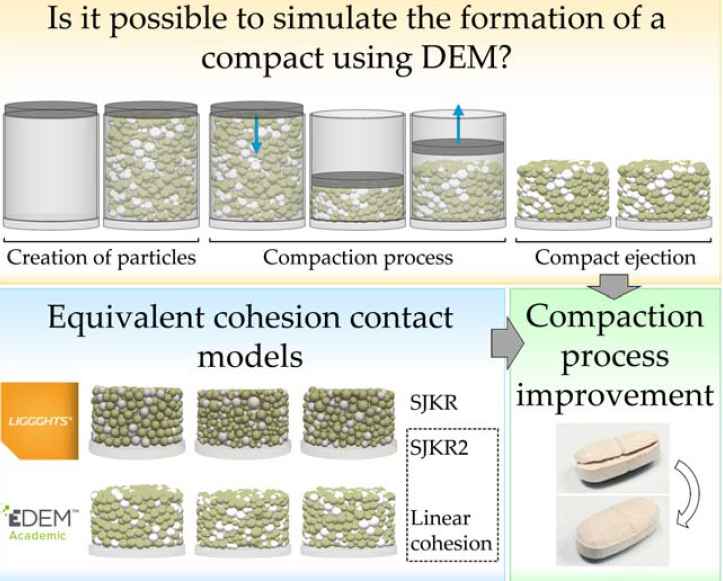The purpose of this work was analysing the compaction of a cohesive material using different DEM simulators to determine the equivalent contact models and identify how some parameters of the simulations affect the compaction results (maximum force and compacts appearance) and computational costs. For that purpose, three cohesion contact models were tested (‘linear cohesion’ in EDEM; ‘SJKR’ and ‘SJKR2’ in LIGGGHTS). The influence of the particle size distribution (PSD) on the results was also investigated. Further assessments were performed on the effect of selecting different timesteps, using distinct conversion tolerances for exporting the 3D models to STL files and moving the punch with different speeds. Consequently, it was possible to determine that a timestep equal to a 10% Rayleigh timestep, a conversion tolerance of 0.01 mm and a punch speed of 0.2 m/s are adequate for simulating the compaction process using the contact models in this work. In addition, the results determined that the maximum force was influenced by the PSD because of the rearrangement of the particles. The PSD was also related to the computational cost because of the number of simulated particles and their sizes. Finally, an equivalence was found between the linear cohesion and SJKR2 contact models

